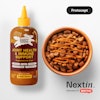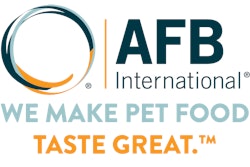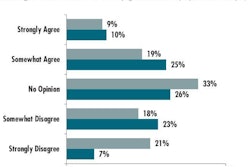
Palatability, according to Royal Canin US, “characterizes the appeal of food for the animal and the ease with which it is eaten.” While this definition seems simple and straightforward, every petfood manufacturer, including this company, knows that making food highly palatable to dogs and cats is a very complex process requiring expertise and research to build knowledge and continue improvement. Fortunately, that research exists and is going strong.
For example, Kemin Industries, through its Nutrisurance Division, has found that R&D for its Palasurance line benefits from the company’s ongoing research and background in complementary areas such as antioxidants and antimicrobials. The company’s years of continual vendor monitoring have helped it stabilize oxidation and quality in raw materials, giving it an advantage in building consistent palatant performance, Kemin says.
Kemin also draws on a broad range of technology platforms from diverse businesses, such as fermentation for the production of enzymes for agricultural applications. Recently, the company hired Gordy Hering, PhD, as director of R&D for palatants. Dr. Hering brings experience in enzymatic hydrolysis and reaction flavors, key elements of petfood palatant performance, the company says, adding that its understanding of enzyme function in palatants at the molecular level is one of the factors contributing to continuous improvement for the Palasurance line.
For SPF, making pet owners happy is as important as ensuring the food appeals to the pet. Earlier this year, the company launched its FeelGoodProgram, the result of a long-term partnership with Firmenich, a flavor development firm. “Our research and development teams have worked together for three years to prove it was technically feasible to design a sensorial solution that improves a kibble smell for the owner while maintaining excellent palatability performance for the pet,” says Chloé Champion, markets and trends manager for SPF.
The two companies developed the program based on research showing that if the smell of a petfood is unpleasant or overwhelming, it alters the feeding experience the owner shares with the pet. In a 2011 survey of 250 cat owners and 250 dog owners in France, SPF found that pet satisfaction and the nutritional performance of a kibble come in first and second in owner expectations of a petfood (Figure 1.) Yet the owner’s enjoyment of the product ranks third; and the survey also found a petfood’s appeal to the owner is largely determined by its smell.
However, Champion says, if the concept—a petfood should appeal to both the animal and the owner—is simple, bringing it to reality is difficult. Smells pleasing to the human nose are rarely appealing to pets, and expectations may vary by customer segment and geographic area. For example, Americans enjoy a roasted chicken smell, but European and Asian pet owners prefer boiled or dark chicken. Regardless of the aroma, it must always be consistent with the product positioning and claims. Finally, very few sensorial solutions are stable enough to be perceived during the whole shelf life of dry petfood products (12 to 18 months), Champion adds, and all the solutions must first guarantee uncompromised palatability for the pet, so development always starts with palatability tests in expert panels.
So far, SPF and Firmenich have proved 12 months of shelf life, with consumers still showing a significant preference for kibbles coated with a sensorial solution from the FeelGoodProgram over the control diet. Studies are ongoing to validate 18 months.
AFB International bases its R&D approach on understanding the drivers for palatability, from basic science to complex product systems. This requires fundamental research into what animals can perceive, the modulators of that perception, how these perceptions are translated into behaviors and identifying palatant characteristics in the context of the finished product, says AFB.
Palatants are complex systems comprised of many macro and micromolecules that must effectively:
- Serve multiple functions—enhancing the sensory experience of the pet and its owner, masking unpleasant taste compounds and improving appetite in an animal reluctant to eat due to health issues;
- Appeal to all of a pet’s sensory capacities—olfactory, chemesthetic (chemical irritation), taste, texture, possibly even visual and auditory; and
- Work in combination with the product on which it is applied—itself a complex mixture of tastes, textures and aromas with differing chemical, physical and sensory characteristics.
Designing palatants that effectively achieve these objectives, while also working within manufacturing, regulatory, marketing and resource constraints, requires an R&D process that helps understand what is driving the animals’ feeding behavior and flavor preference as well as which finished product characteristics are meeting these needs, AFB says. It works to reach this understanding through a variety of research methods, ranging from the traditional two-pan feeding trial (which helps demonstrate what is palatable) to tests that help show why a food is palatable.
For example, neural imaging and recording techniques have demonstrated that “flavor” is a central percept requiring inputs from multiple orosensory modalities (Figure 2), AFB says. Other examples include operant testing systems, which teach animals to associate a taste or odor with a reward and are used to determine whether animals can detect or discriminate sensory stimuli such as specific taste or aroma compounds, and facial reactivity and behavioral analysis techniques, which are being used in palatability research with rodents, human infants and cats.
“Combining research perspectives from ‘nose to tail’—from the animal to the production floor and back again—enables AFB to manufacture and deliver consistently performing palatants to ensure our customers’ success in the market,” the company says.


















